Spiral garden designs offer a unique blend of functionality, aesthetics, and sustainability by leveraging elevation and microclimates to cultivate diverse plantings in compact spaces. Common themes include using natural materials—stone, brick, wood—or modern alternatives like concrete and metal; creating zones from dry, sun-baked tops to moist, shaded bases; and integrating themes such as herbs, succulents, flowers, or edibles. Whether built flush with the ground or raised for accessibility, spiral gardens maximize yield, simplify maintenance, and add sculptural interest to yards of any size. Below are 20 inspiring spiral garden ideas, each adaptable to your space and style.
1. Classic Permaculture Herb Spiral
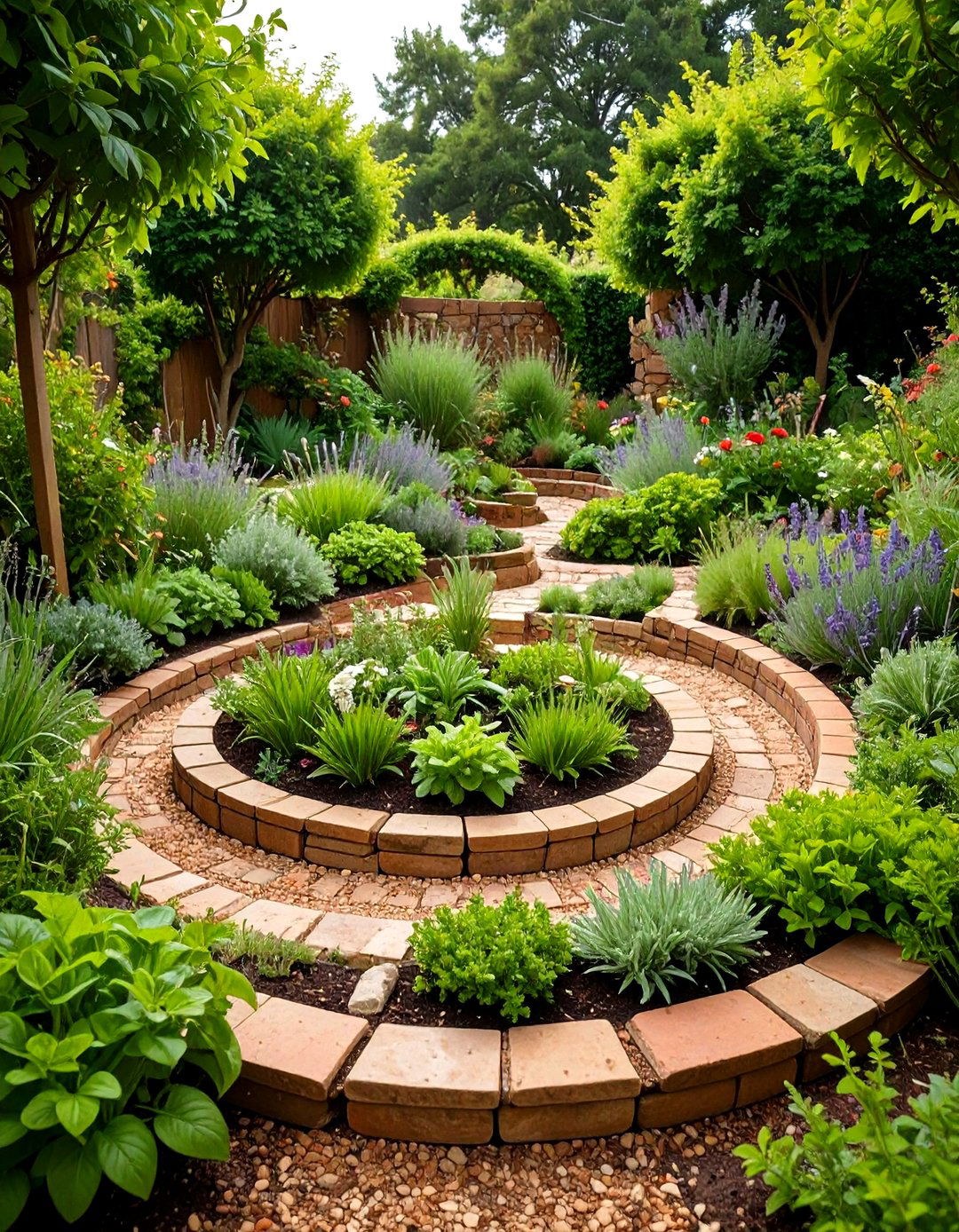
A permaculture herb spiral uses stones or bricks arranged in a winding mound about 1–1.5 m across, creating distinct microclimates for various herbs. At the sunny, well-drained summit, plant Mediterranean favorites like rosemary and thyme; mid-slope, cultivate oregano and sage; and at the moist base, grow parsley, mint, and basil. This configuration conserves space, eases harvesting, and encourages beneficial insects. Maintenance entails occasional weeding, seasonal re-mulching, and mindful watering—top zones need less moisture, while bottom areas may require supplemental irrigation during dry spells.
2. Dry-Stacked Brick Spiral

Using reclaimed bricks without mortar, a dry-stacked spiral bed imparts rustic charm and excellent drainage. Begin with a circular base, then stack bricks in overlapping tiers, spiraling upward to form walls 30–45 cm high. Fill with a blend of garden soil and compost. Plant drought-tolerant herbs such as lavender, sage, and thyme at the apex, with moisture-loving greens like mint at the foot. The thermal mass of the bricks moderates temperature swings, extending the growing season.
3. Stone-Circle Succulent Spiral
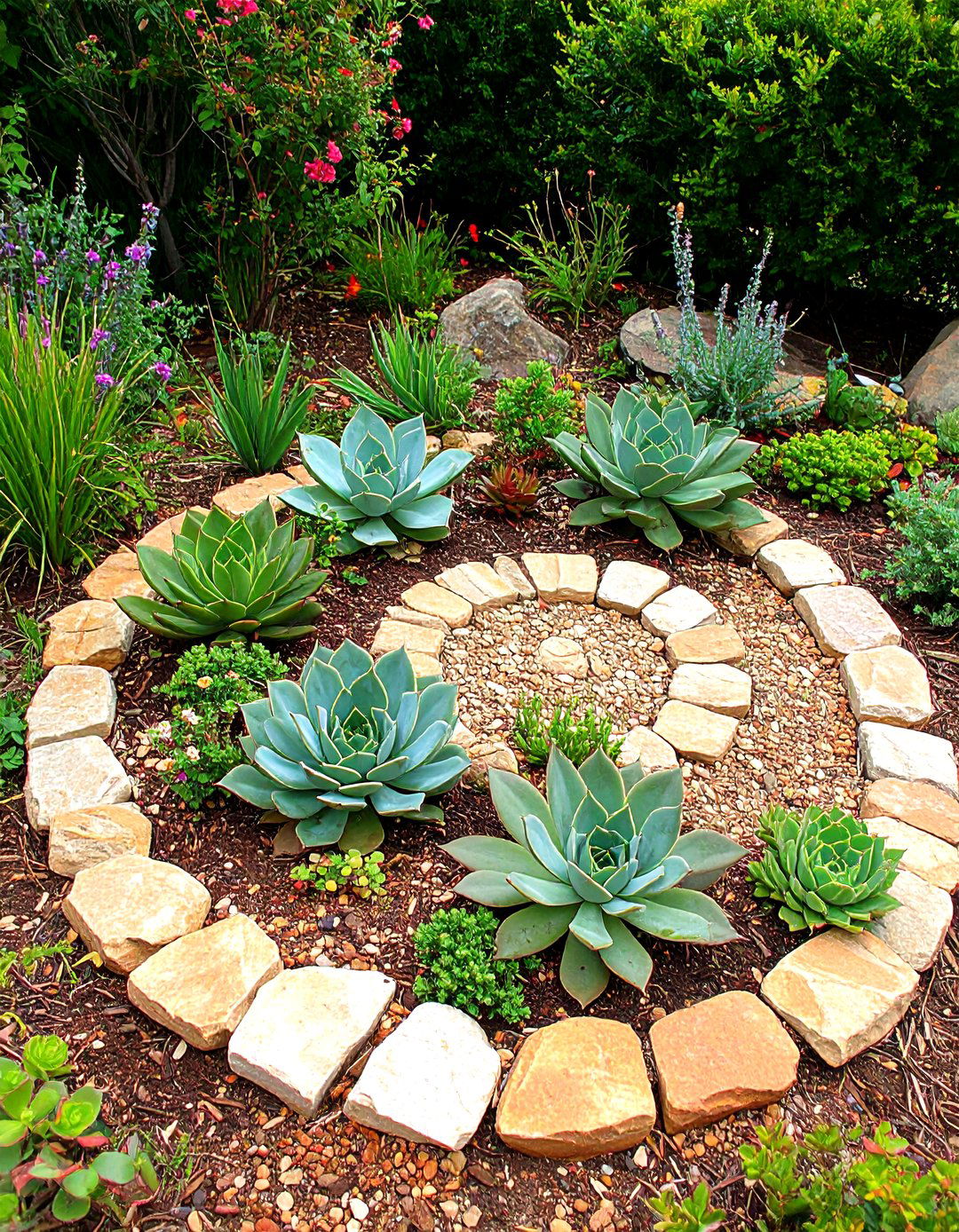
Assemble flat field stones or flagstones in a spiral layout, creating shallow pockets for succulents and alpine plants. The porous stone retains minimal moisture, ideal for sedum, echeveria, and sempervivum. Group plants by water needs: drought-resistant varieties near the dry crest and moisture-preferring types lower down. This low-maintenance design thrives in rock gardens and xeriscapes, requiring only infrequent irrigation and occasional debris removal.
4. Raised Timber Spiral Bed

For ease of access, construct a raised spiral from treated timber or cedar planks. Anchor the boards in the ground and spiral upward, reaching about 50 cm at the highest point. Fill with soil and compost, then plant a mix of vegetables—lettuce and spinach at the bottom, tomatoes and peppers mid-tier, and strawberries or marigolds at the top. The elevation improves drainage and reduces back strain during planting and harvesting.
5. Patio-Container Spiral
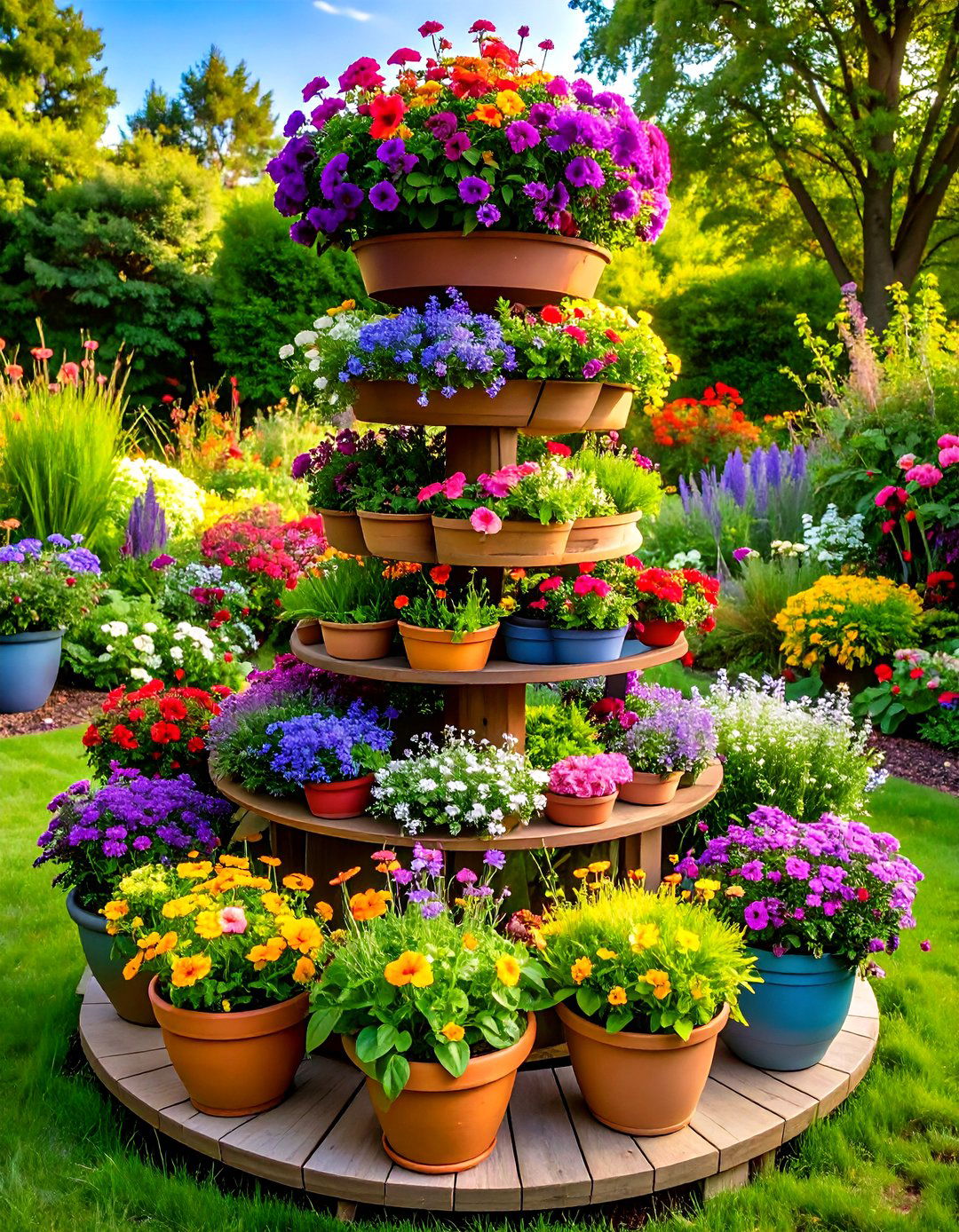
Ideal for balconies or small patios, use stackable pots or self-watering planters arranged in a spiral. Starting with large containers at the base, taper to smaller ones at the summit. Integrate colorful annuals like petunias or pansies alongside culinary herbs to combine beauty and function. This modular approach allows year-round rotation and easy relocation, perfect for renters or seasonal decor.
6. Concrete Block Spiral
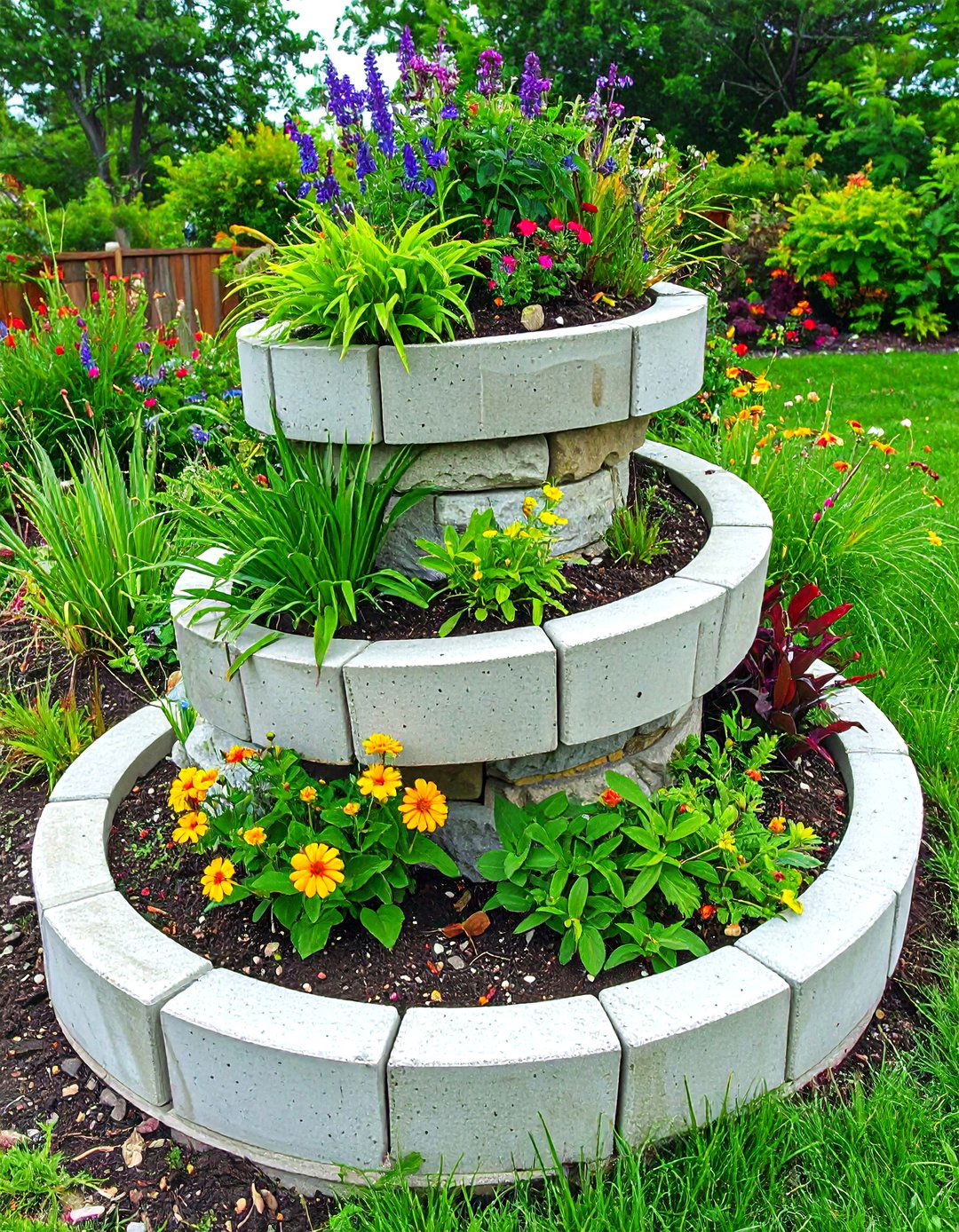
Utilize hollow concrete blocks to create a sturdy, industrial-style spiral. Stack blocks in spiraling tiers; fill interior voids with soil and plant directly or use them as shelves for potted specimens. Blocks’ thermal properties help protect roots, and the uniform shape makes assembly straightforward. Ideal for modern landscapes, combine with ornamental grasses and hardy perennials for contrast.
7. Living Fence Spiral
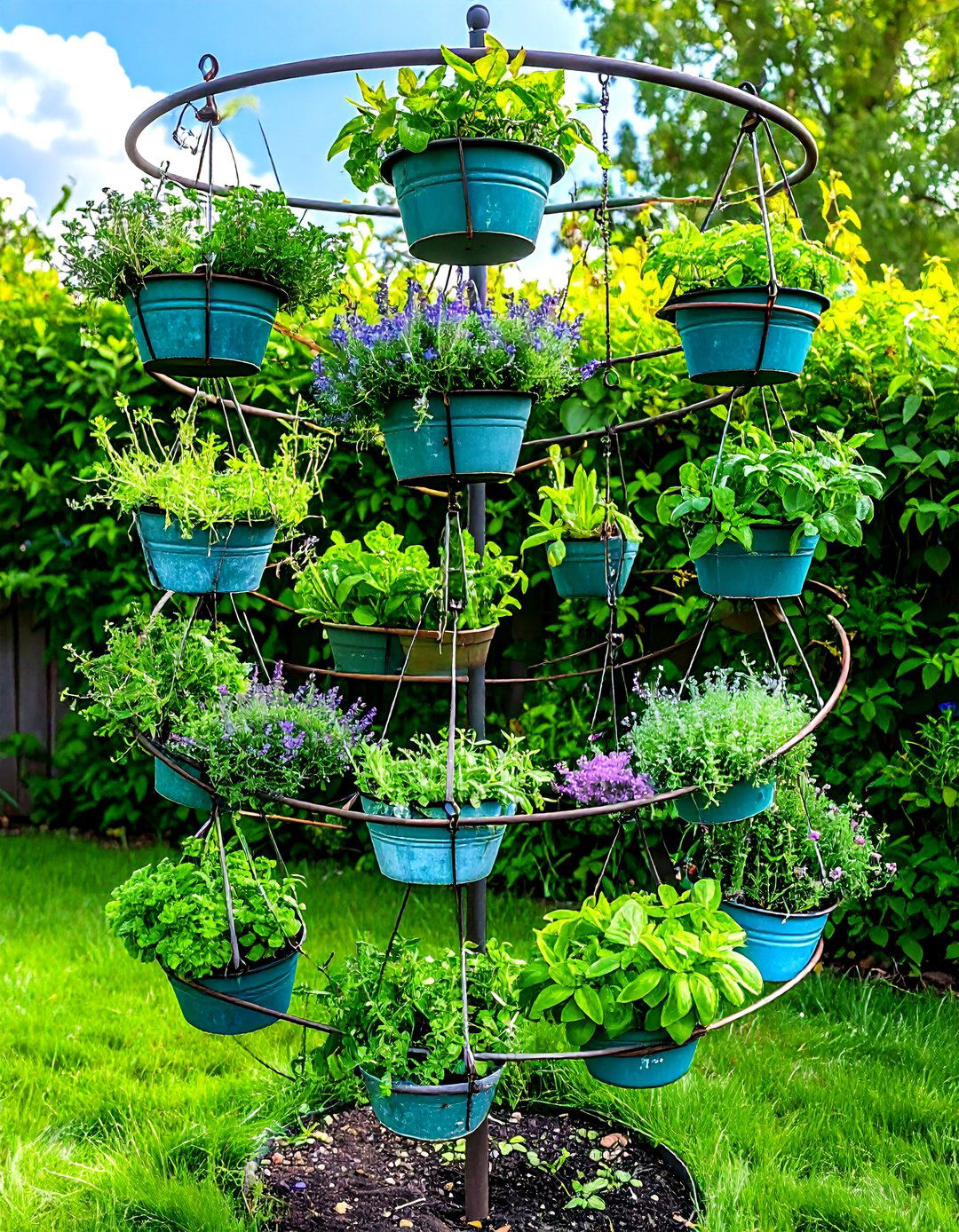
Transform a bare fence into a vertical spiral herb garden by fixing spiral-shaped wire or hooks and hanging planters. Fill with potted herbs—mint, lemon verbena, thyme, and sage—for instant greenery and easy access. Position near kitchen doors for seamless harvesting. Regular watering and pruning ensure lush growth; in winter, replace with seasonal decor.
8. Fairy-Garden Spiral

Craft a whimsical spiral using driftwood or twisted branches to form the frame. Line with coco coir and fill with potting mix. Plant miniature varieties—tiny succulents, creeping thyme, and mosses—and embellish with fairy figurines, pebbles, and small mushrooms. This enchanting feature suits shaded nooks and children’s gardens, requiring light watering and occasional trimming.
9. Water Feature Spiral
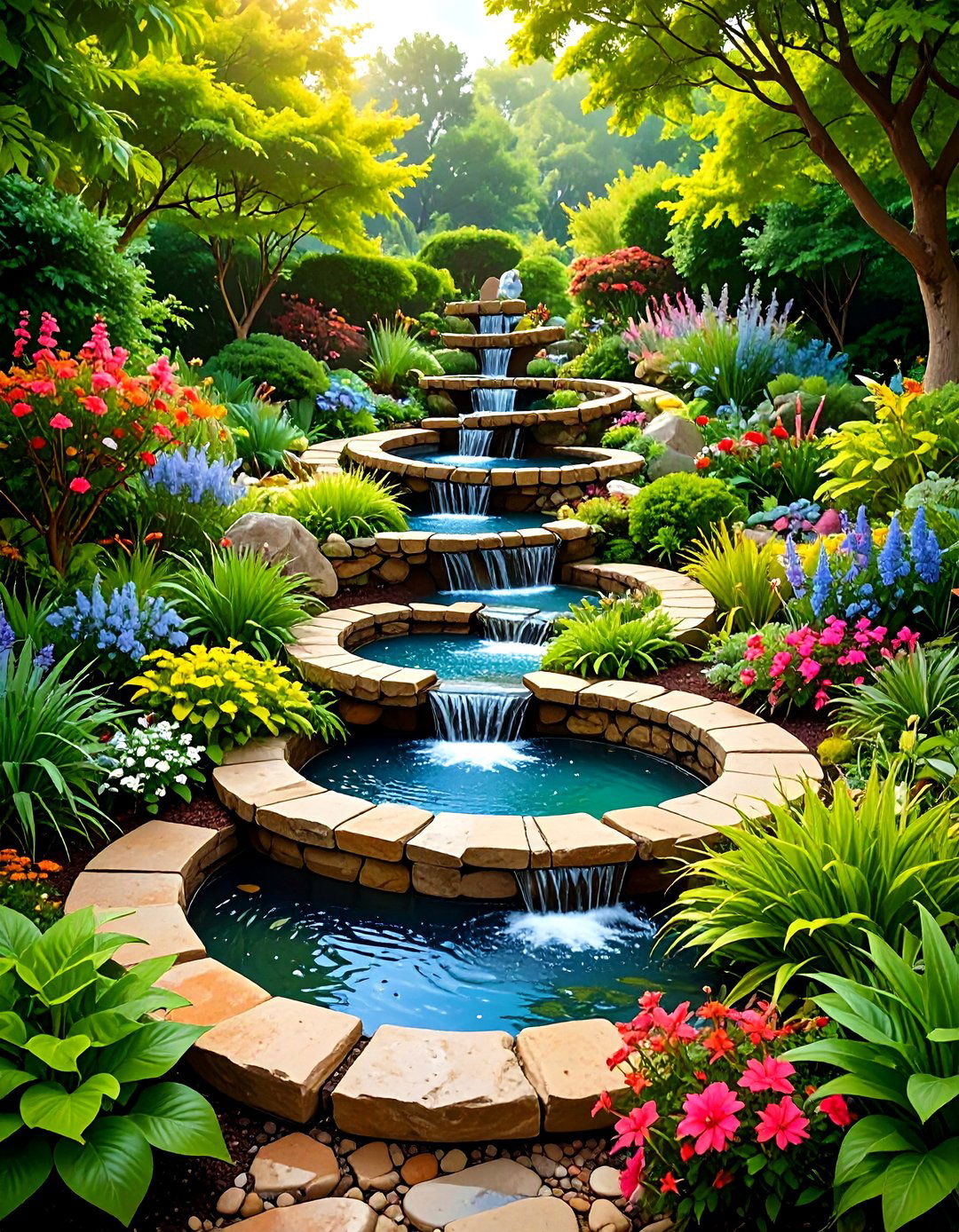
Incorporate a shallow spiral channel lined with stones, allowing water to trickle from the top to a small reservoir at the base. Surround with moisture-loving plants—fern, marsh marigold, and water mint—while sun-loving species occupy the drier crest. This dynamic design supports native dragonflies and provides soothing sound, needing a small pump and seasonal cleaning.
10. Succulent-Only Spiral

Build a gently sloping spiral with well-draining cactus mix and sand. Plant solely succulents in color gradients—blues at the center, greens mid-spiral, reds and oranges on the outer edge—for a striking display. Group species by height to maintain visibility and airflow. This design minimizes water usage and thrives outdoors in warm climates or indoors as a living sculpture.
11. Edible Flower Spiral
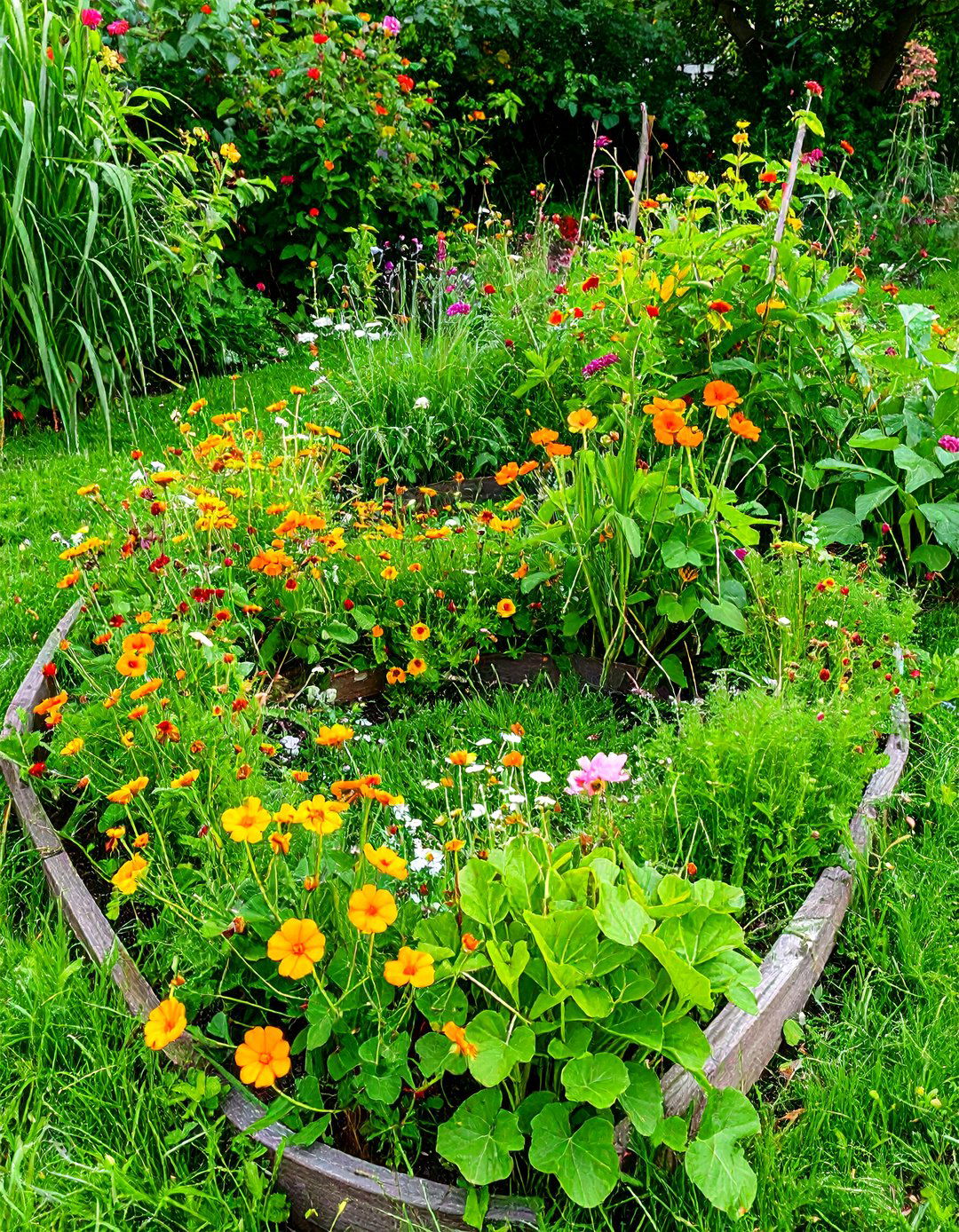
Combine ornamentals and edibles by planting nasturtiums, calendula, and pansies alongside culinary herbs. Arrange nutrient-hungry species—dill, cilantro—near the base and low-growth flowers at the top. Pollinator-attracting blooms support vegetable productivity, while compact spiral form enhances yield per square meter. Seasonal rotation keeps blooms fresh and fertile.
12. Medicinal Herb Spiral
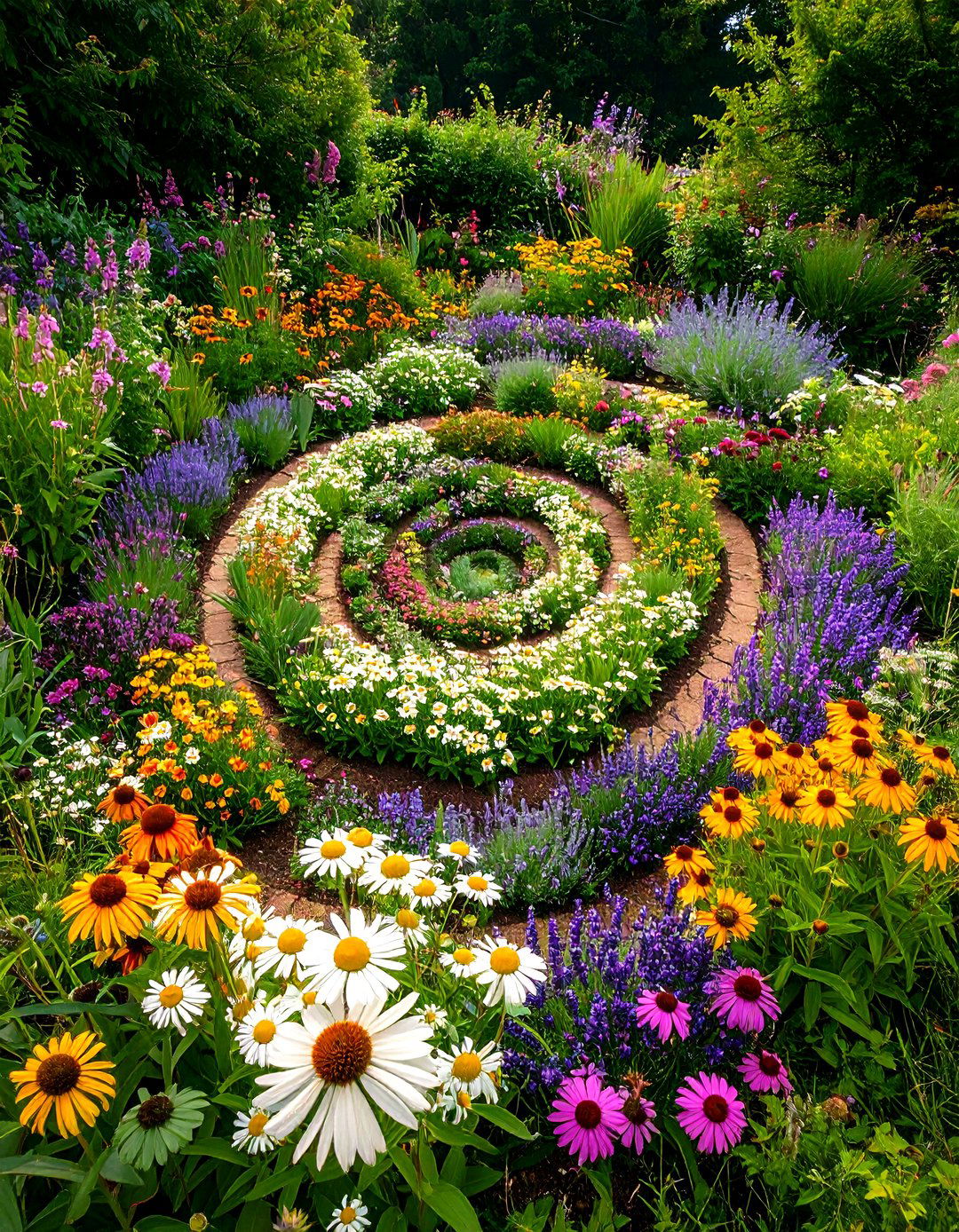
Focus on plants with healing properties—echinacea, chamomile, calendula, yarrow, and lavender. Position deeply rooting varieties lower and shallow-rooted herbs higher. Include a central path for easy access during harvest. This themed spiral serves both botanical interest and home apothecary needs, thriving on organic soil and regular compost feedings.
13. Native Plant Spiral
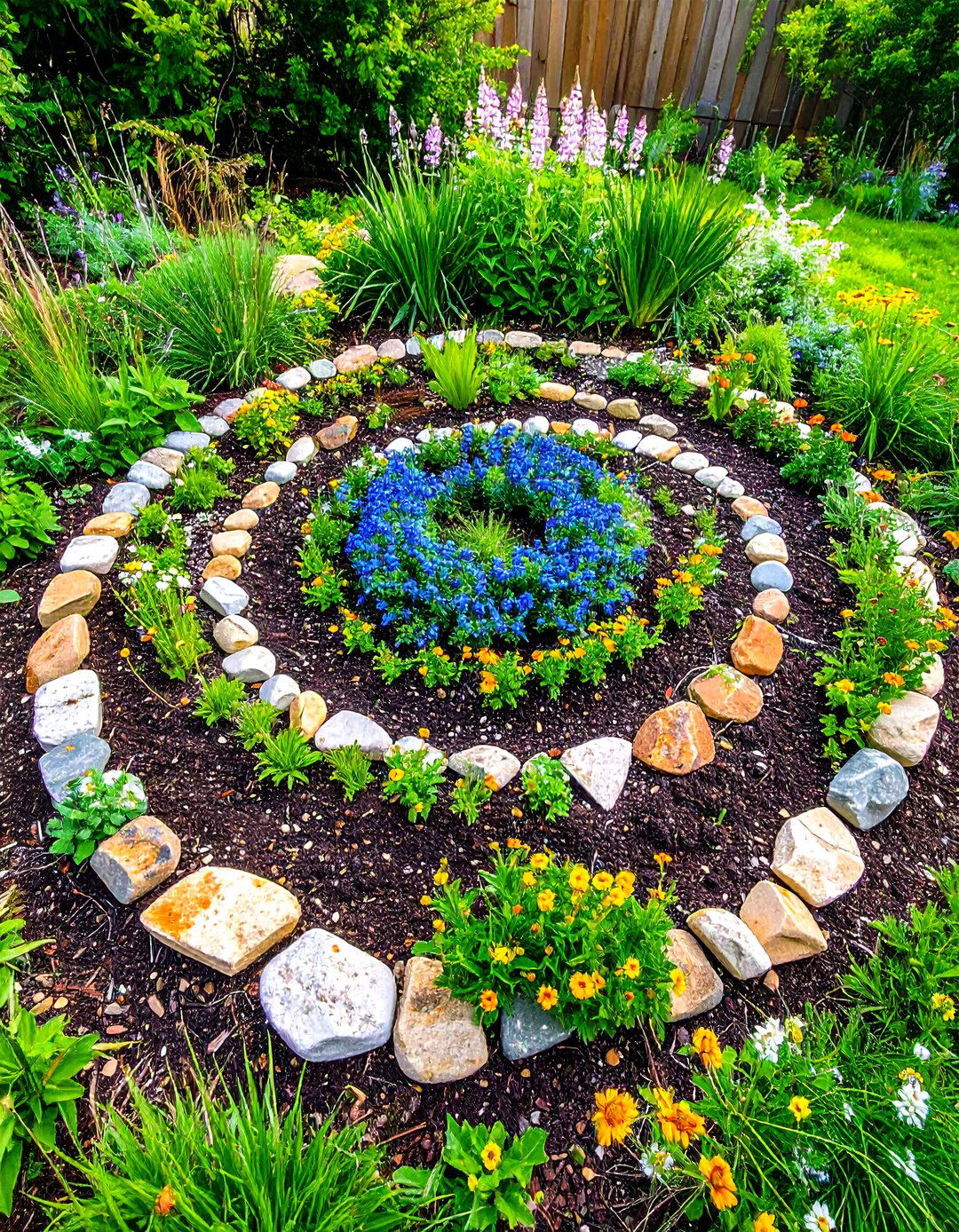
Use local stones and soil, then plant indigenous species—wildflowers, grasses, and shrubs—arranged by drought tolerance from top to bottom. This eco-friendly design fosters local biodiversity, withstands regional climate extremes, and requires little supplemental care once established. Include flowering natives to support pollinators.
14. Vertical Succulent Tower
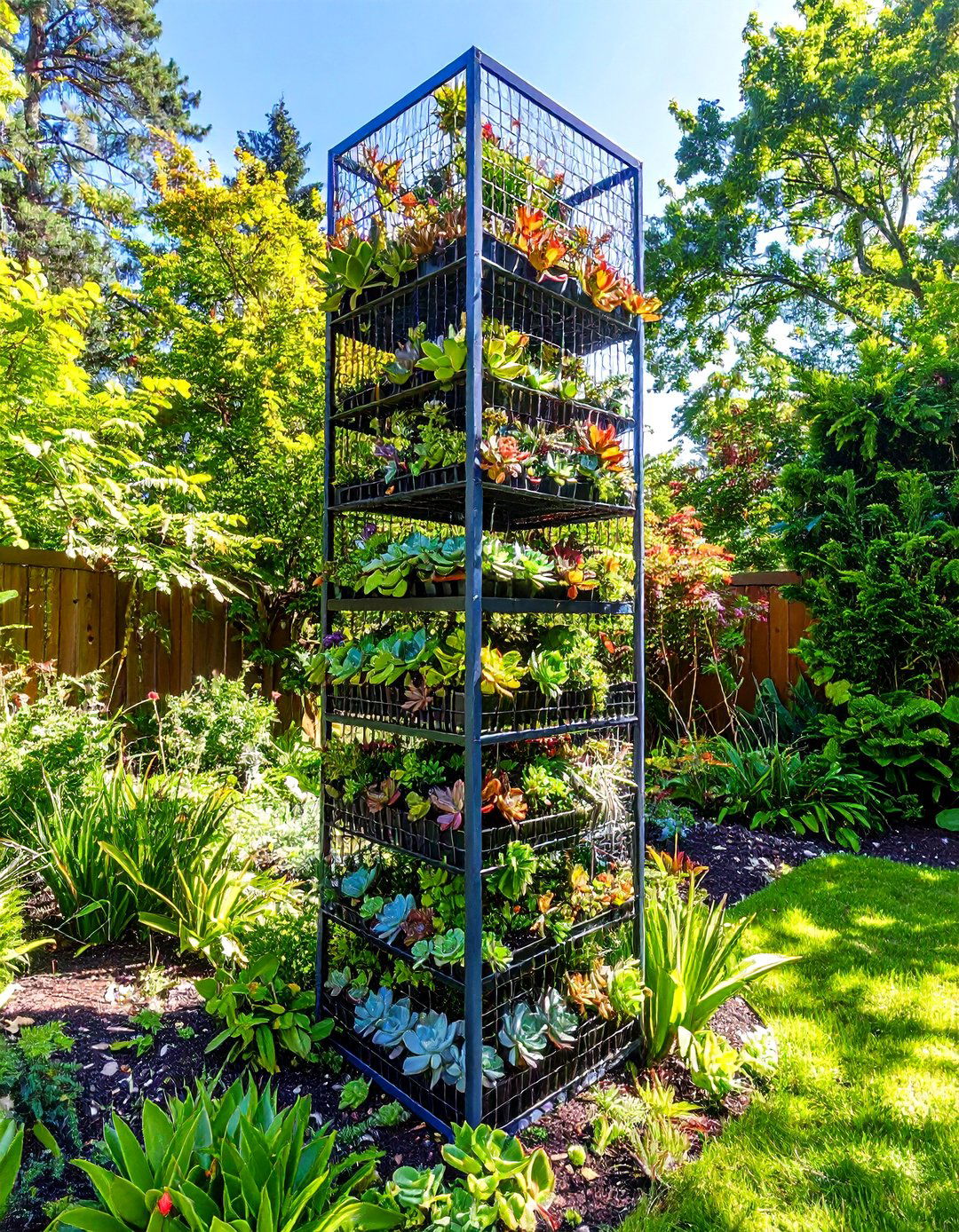
Construct a tall spiral trellis of wire mesh, fill with succulent-friendly soil, and plant cuttings throughout. The structure climbs to several feet, maximizing vertical real estate. Water sparingly via misting; succulents root in crevices, creating a living tower. Ideal for patios and indoor sunrooms.
15. Perennial Flower Spiral

Build a low-profile spiral bed and fill with perennials—salvia, echinacea, coreopsis at the top; hosta, astilbe lower down. This ensures seasonal color from spring to autumn, with plants grouped by moisture need. Minimal replanting and resilience to frost make it a long-term focal point.
16. Spiral Rockery
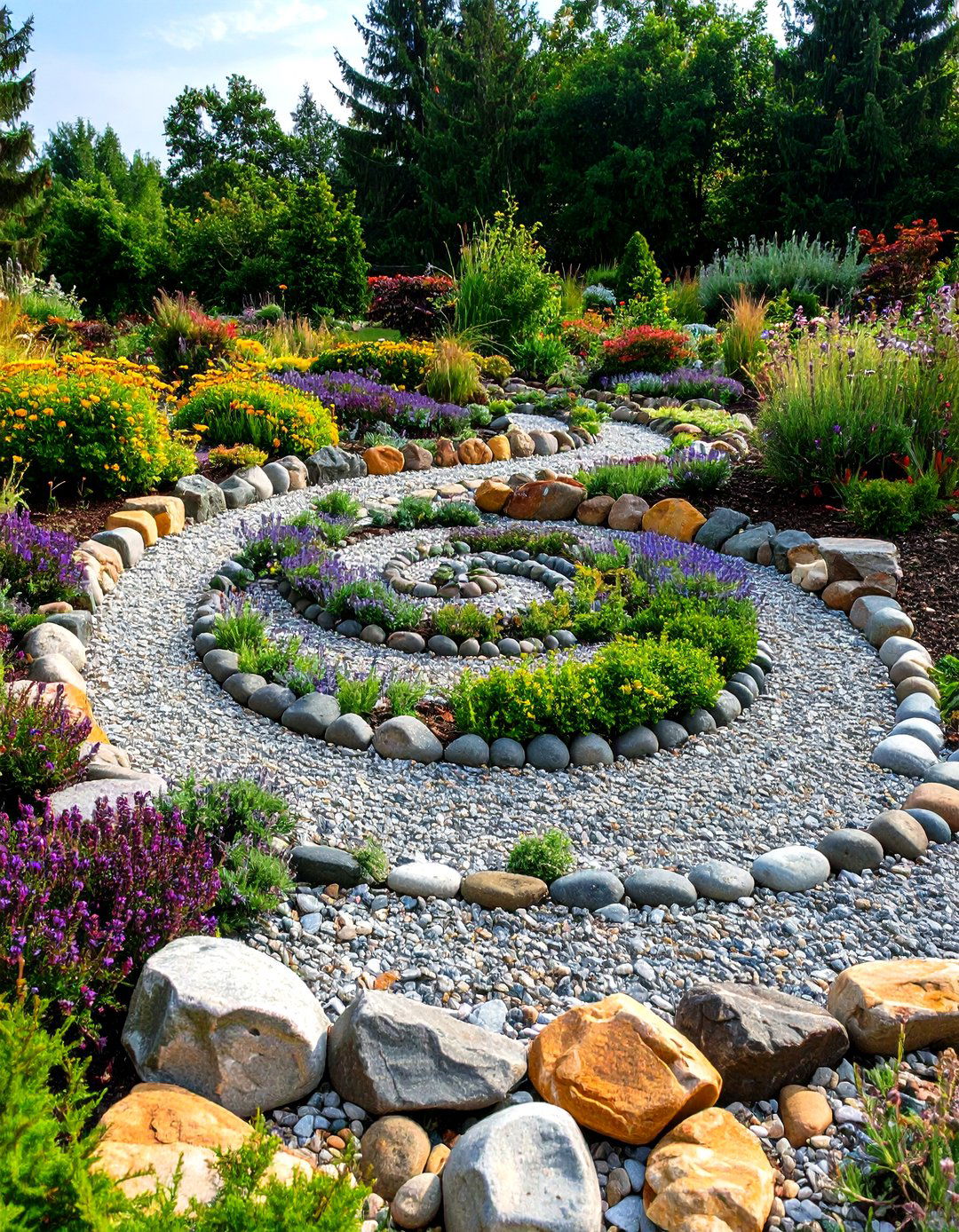
Combine boulders and gravel to form the spiral framework, planting alpine and rock-garden species—thyme, saxifrage, sedum—in crevices. The stark mineral backdrop highlights succulents and dwarf perennials, and gravel facilitates drainage. This hardy design requires little watering and stands up to frost.
17. Modular Plastic Planter Spiral
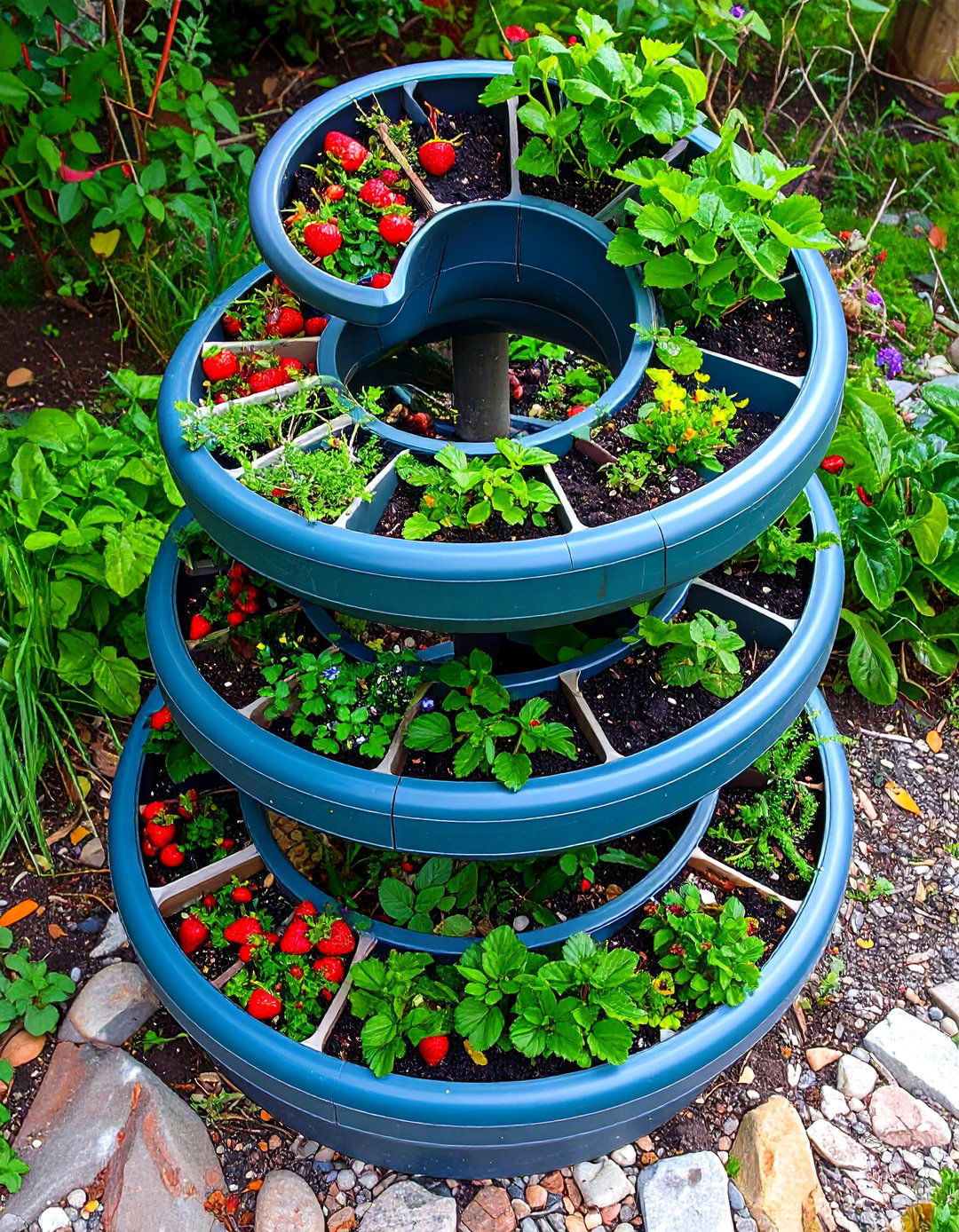
Purchase interlocking spiral planters made of recycled plastic. Stack and fill each tier with soil, planting a mix of strawberries, herbs, and small vegetables. The lightweight modules resist rot, and their portability enables repositioning for optimal sun exposure.
18. Tropical Spiral Garden
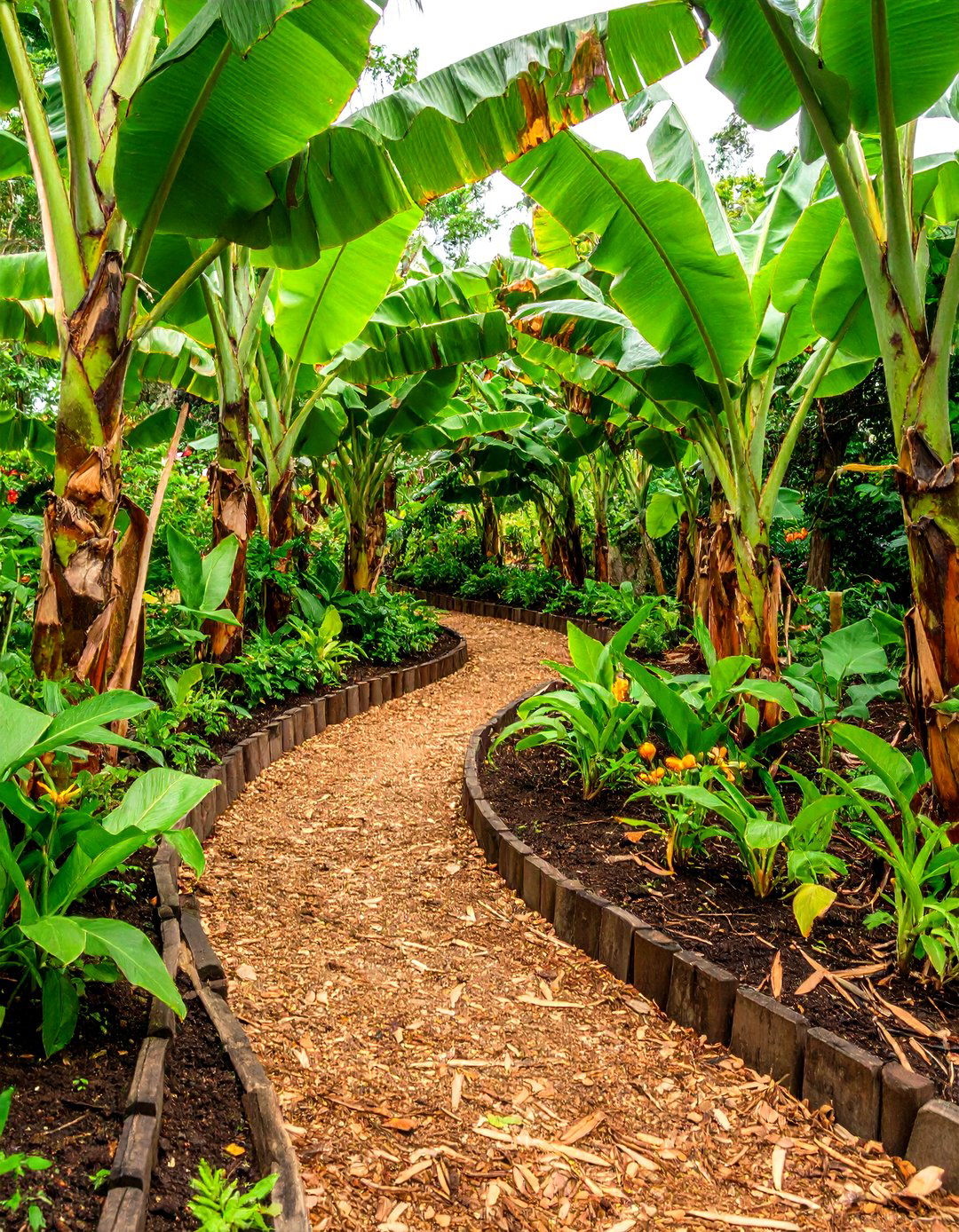
In warm climates, create a spiral bed and plant banana, ginger, turmeric, and cardamom at various elevations. Use organic mulch to retain moisture. The multi-tiered form allows bananas at the base (moist zone) and ginger on mid-levels, while sun-loving cardamom crowns the top. This exotic spiral thrives with regular feeding and shading during peak heat.
19. Spiral Pollinator Garden
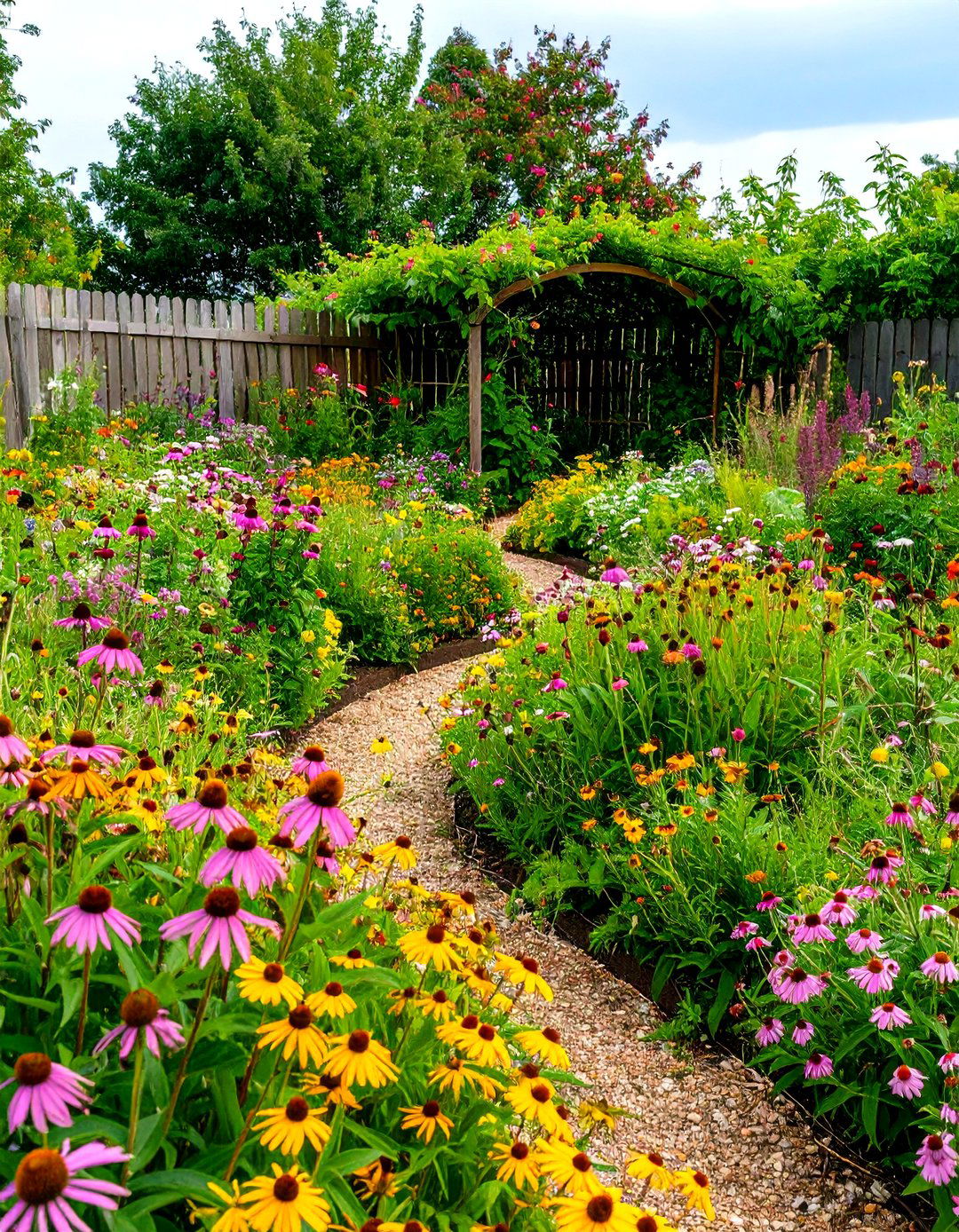
Design a spiral using native wildflowers—bee balm, coneflower, and milkweed—planted by bloom time to ensure continuous nectar flow. Place early bloomers at the base and late bloomers near the crest. Incorporate a small water feature or rocks for butterfly basking. This wildlife-friendly spiral boosts garden health and biodiversity.
20. DIY Pallet Spiral
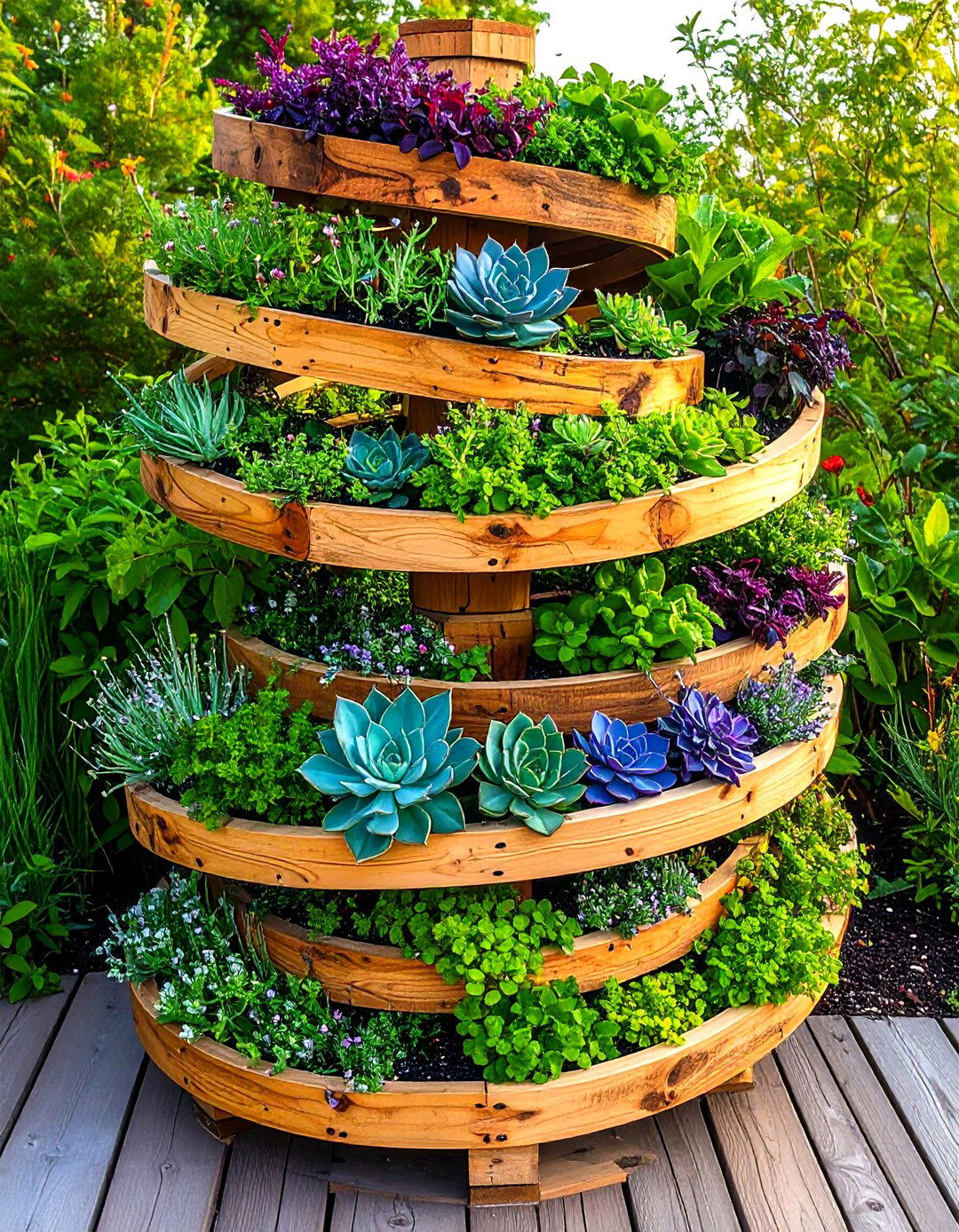
Repurpose a wooden pallet by removing alternate slats to create a spiral shelf. Secure upright, fill each pocket with soil, and plant herbs or succulents. Paint or stain for durability. This budget-friendly vertical spiral suits cottages and urban balconies, needing only routine watering and filler replacement.
Conclusion:
Spiral gardens merge form and function, offering micro-climates that optimize plant growth while saving space and adding architectural interest. From classic stone-built herb spirals to vertical container models and specialized themes like pollinator or medicinal gardens, there’s a spiral design to suit every site and skill level. By selecting materials and plants that align with local climate and your culinary or ornamental preferences, you can create a self-sustaining, low-maintenance garden that thrives year-round.


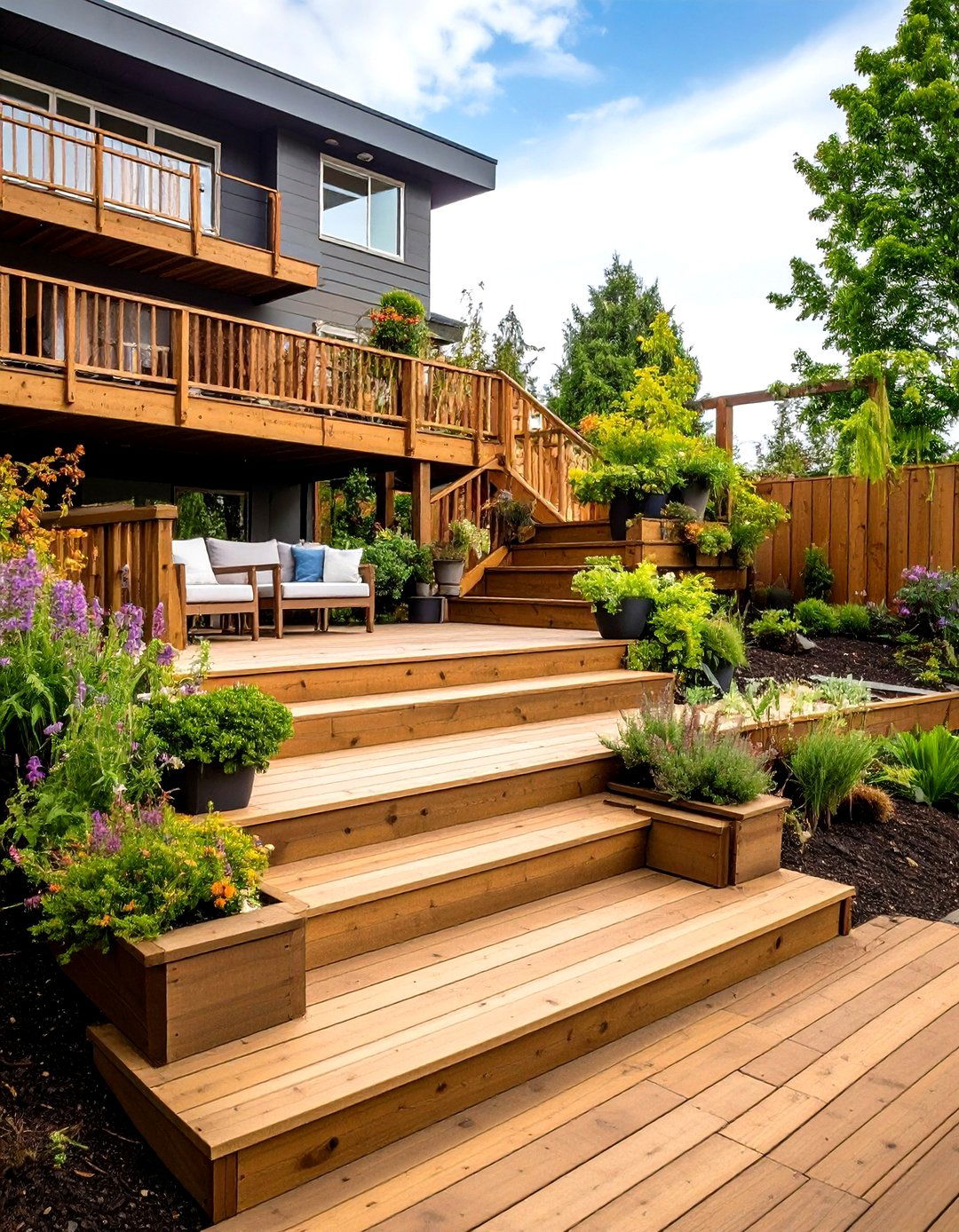
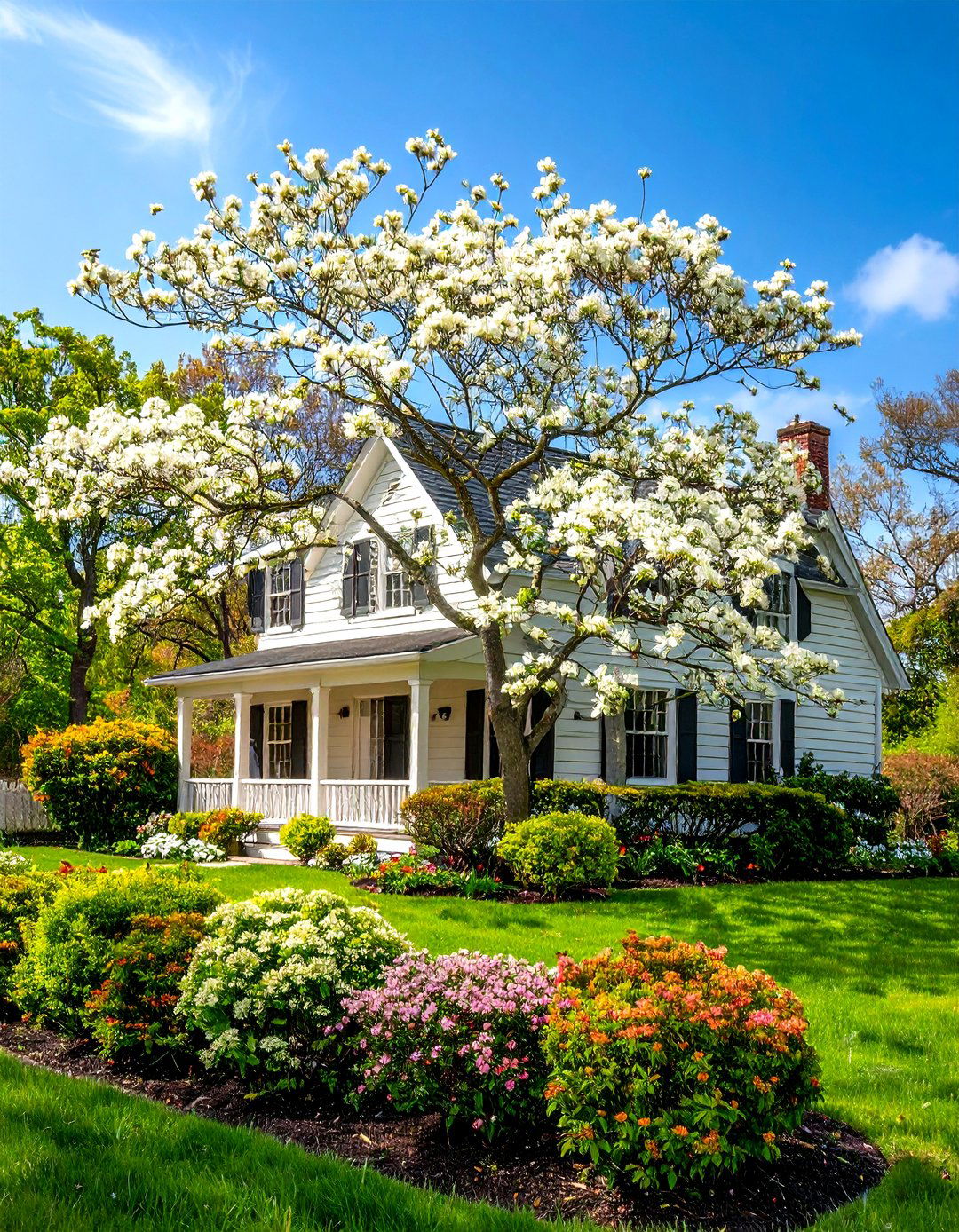
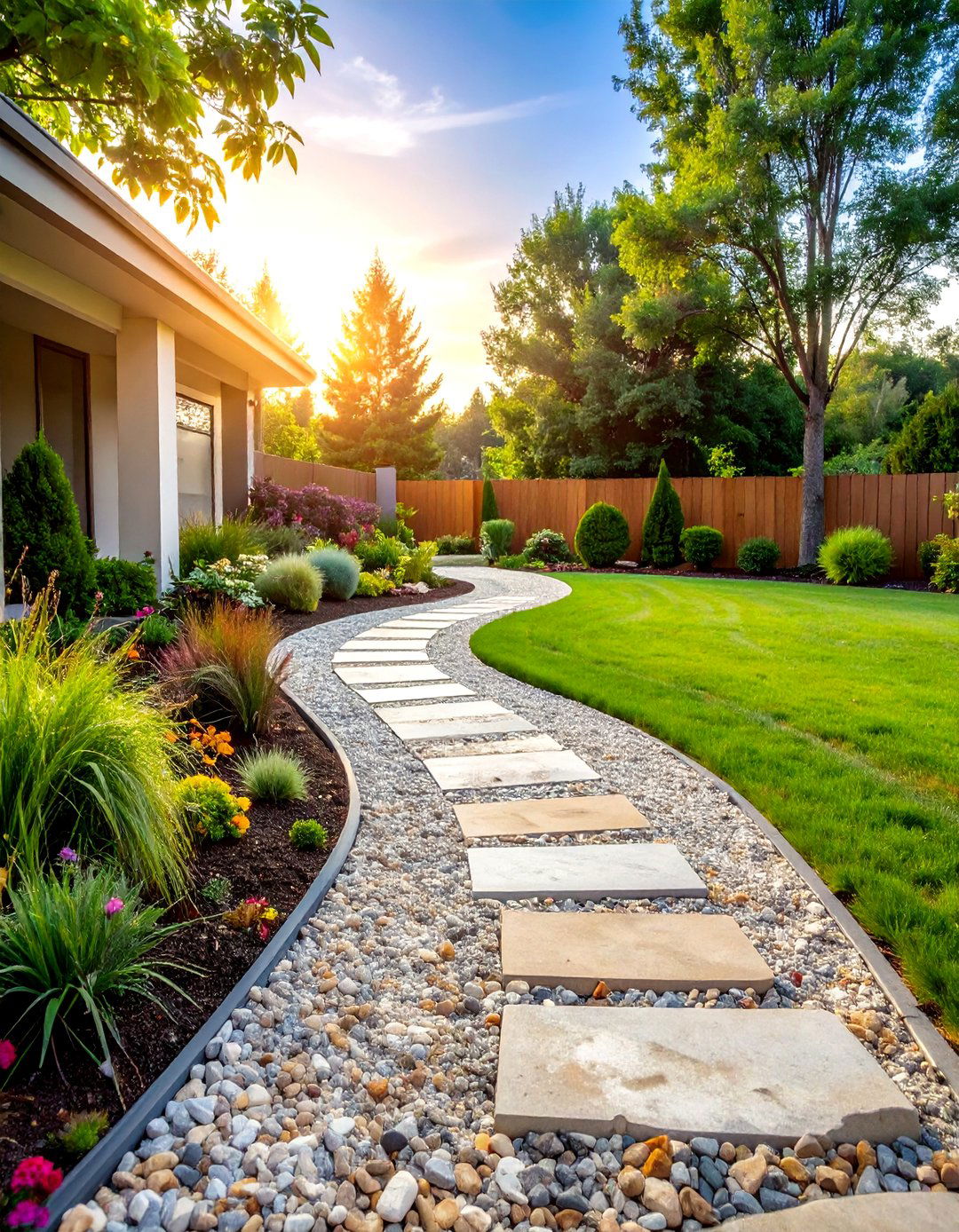

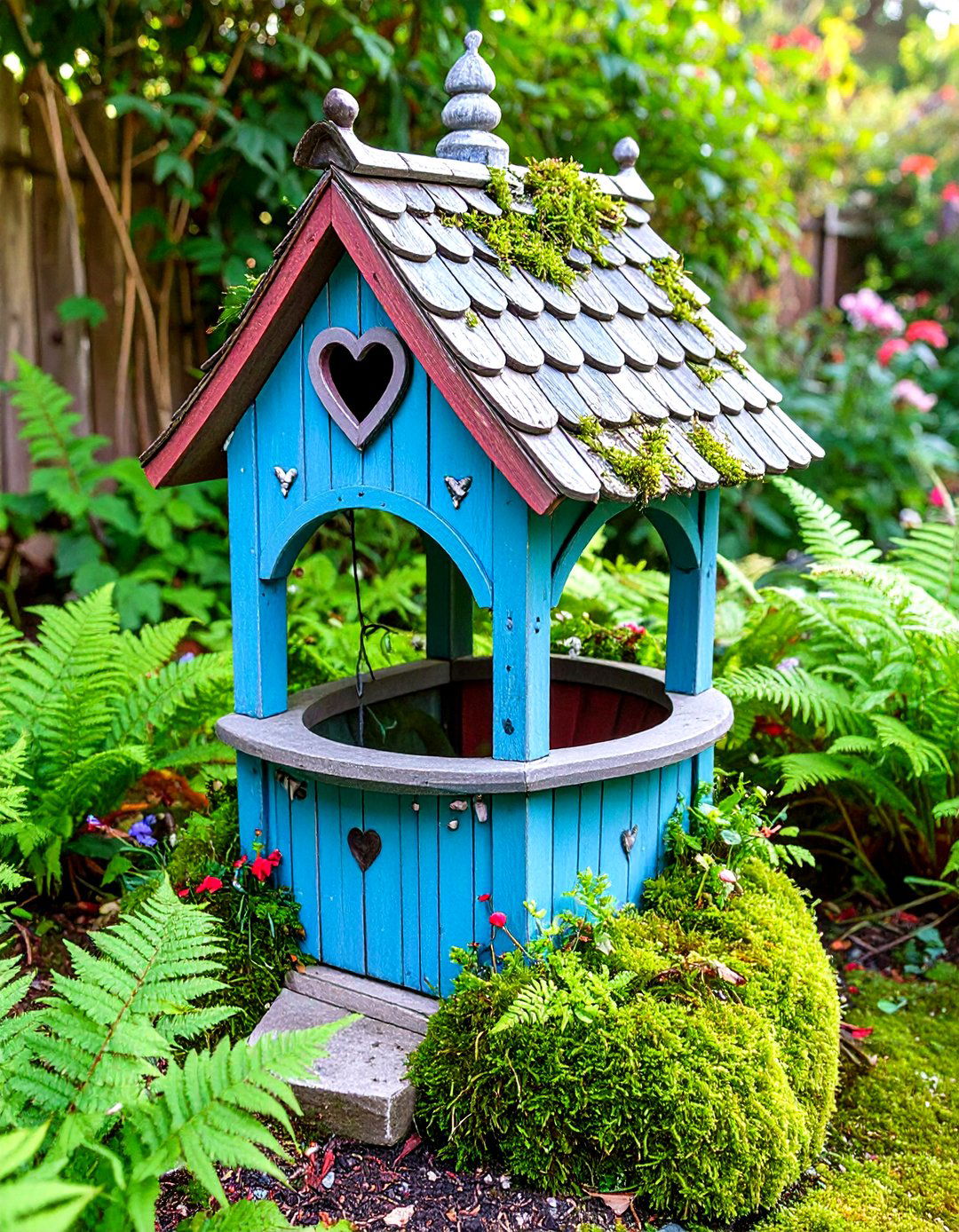

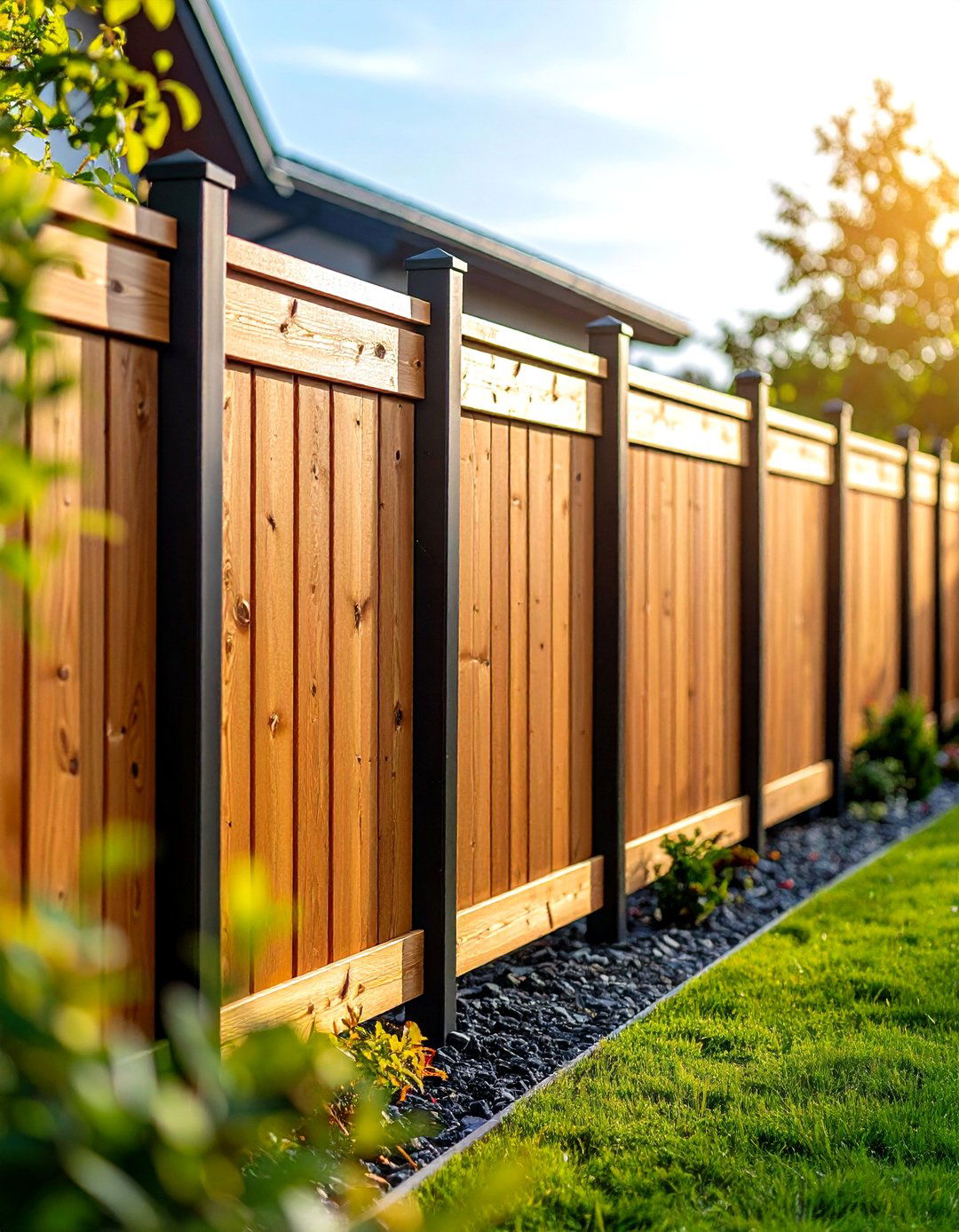


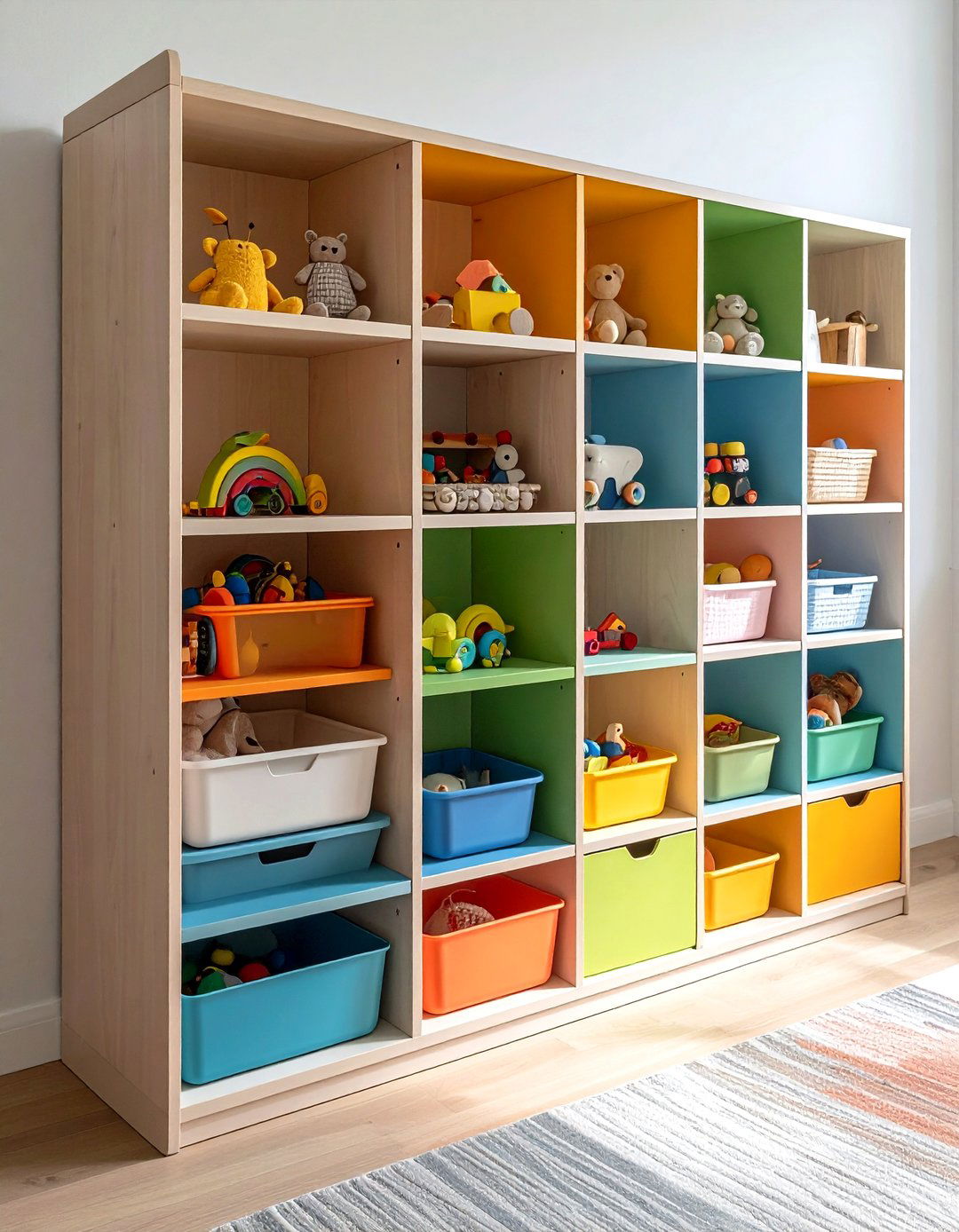

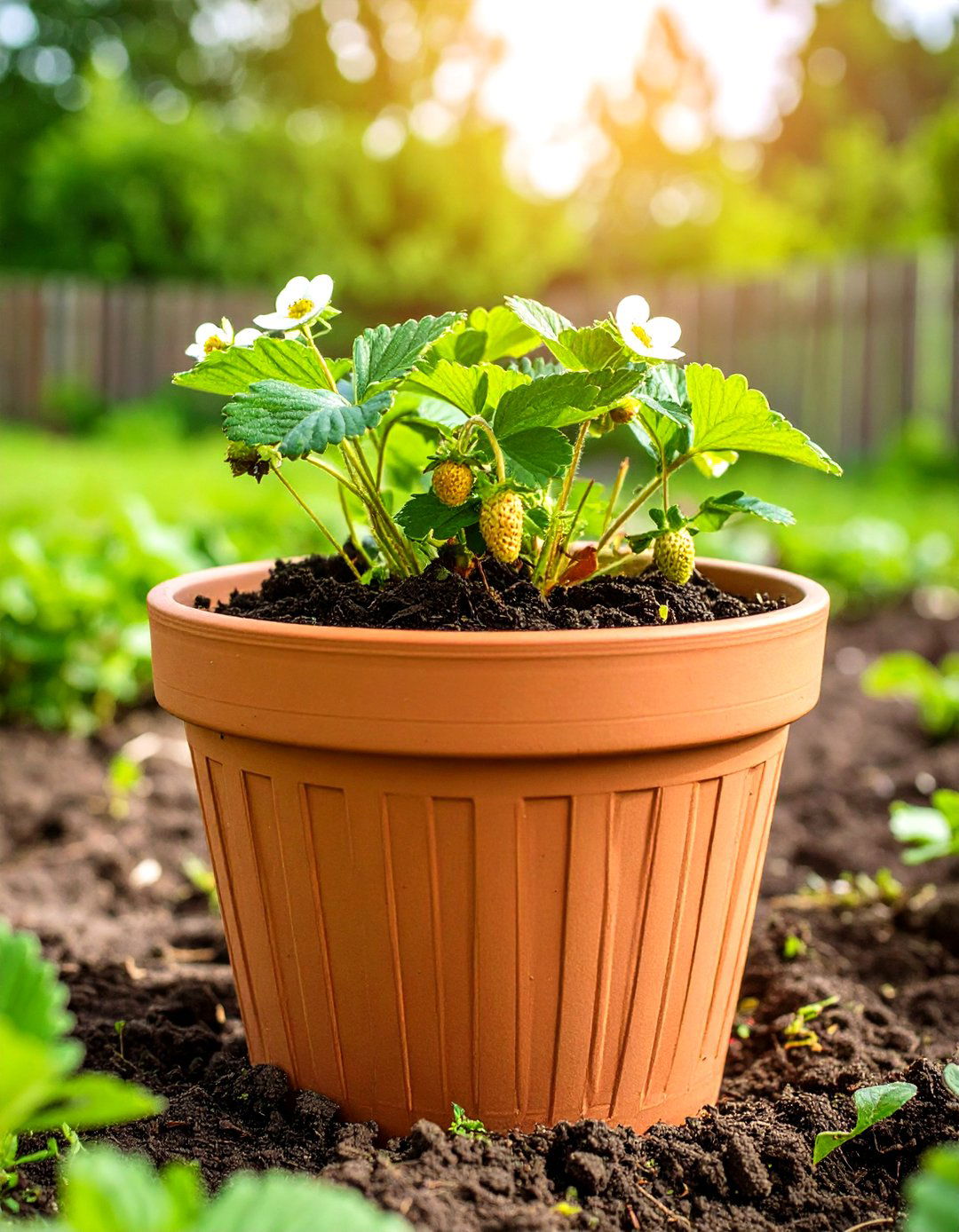
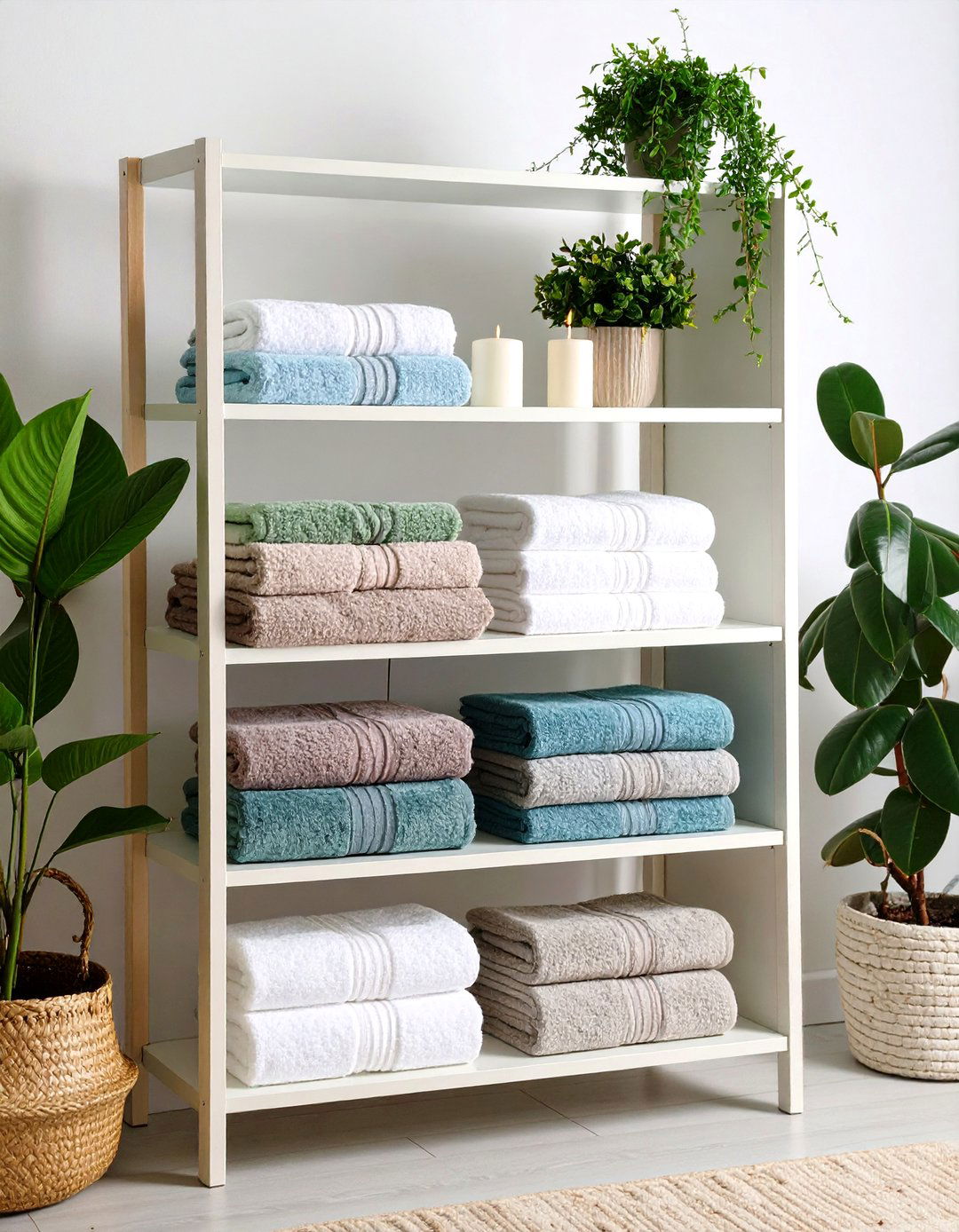
Leave a Reply